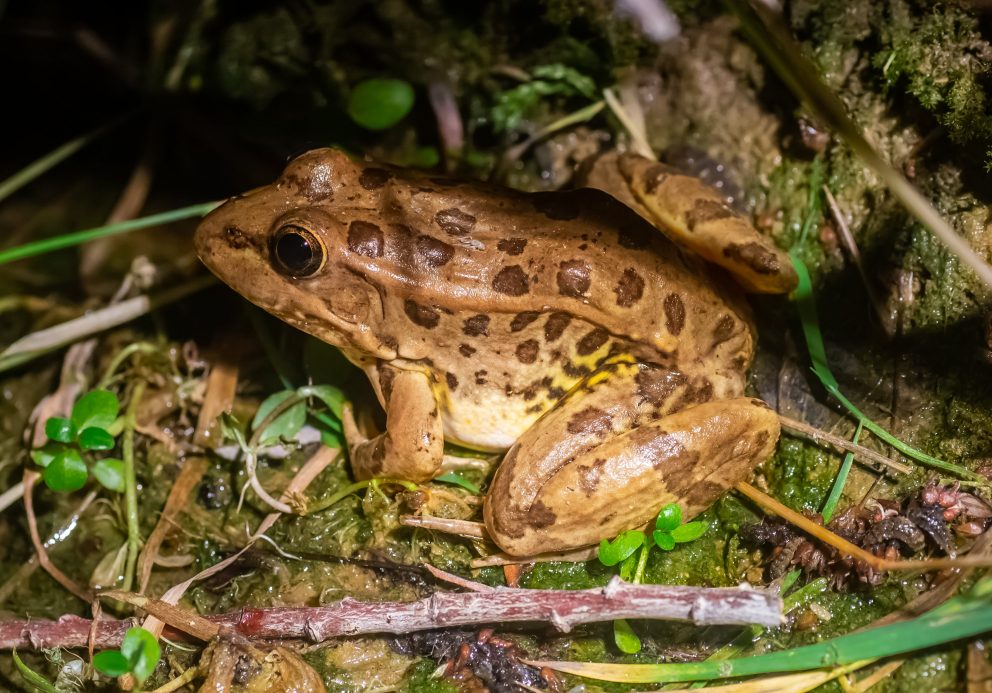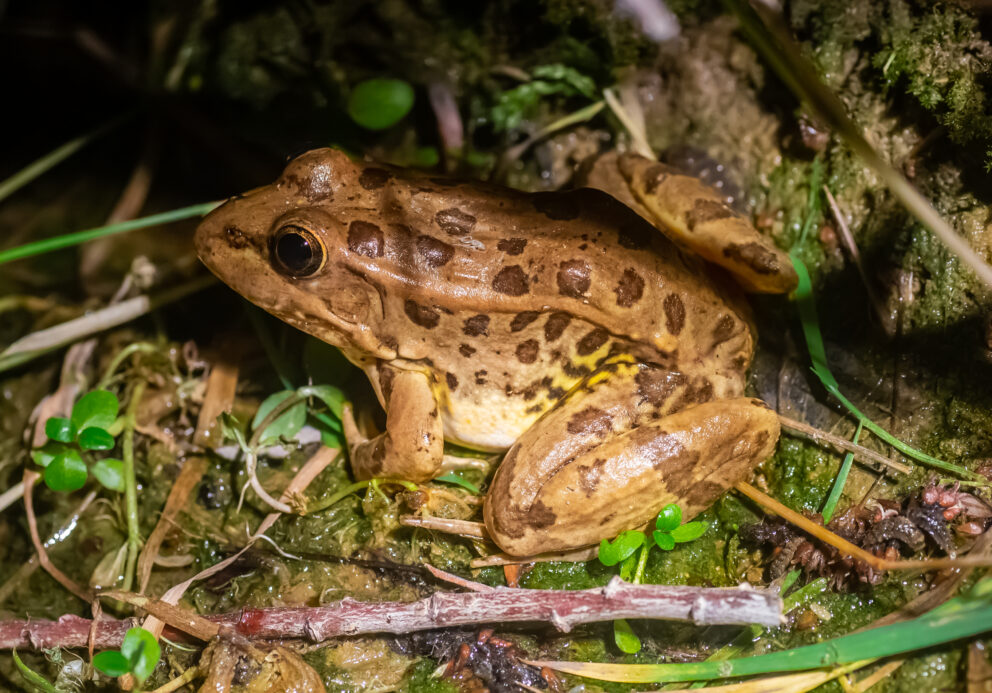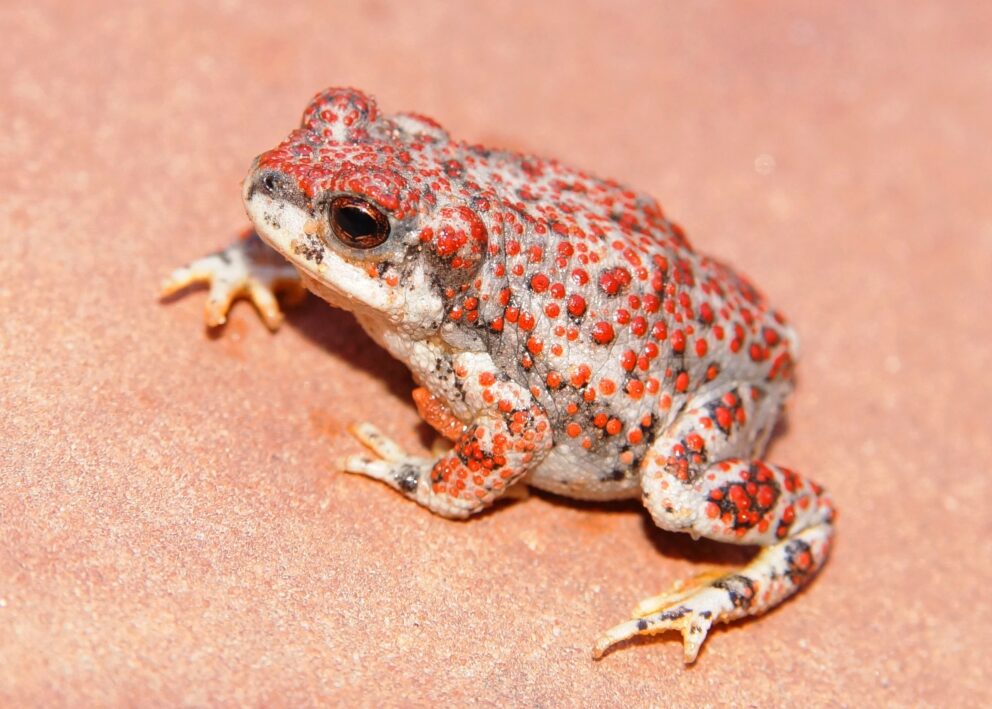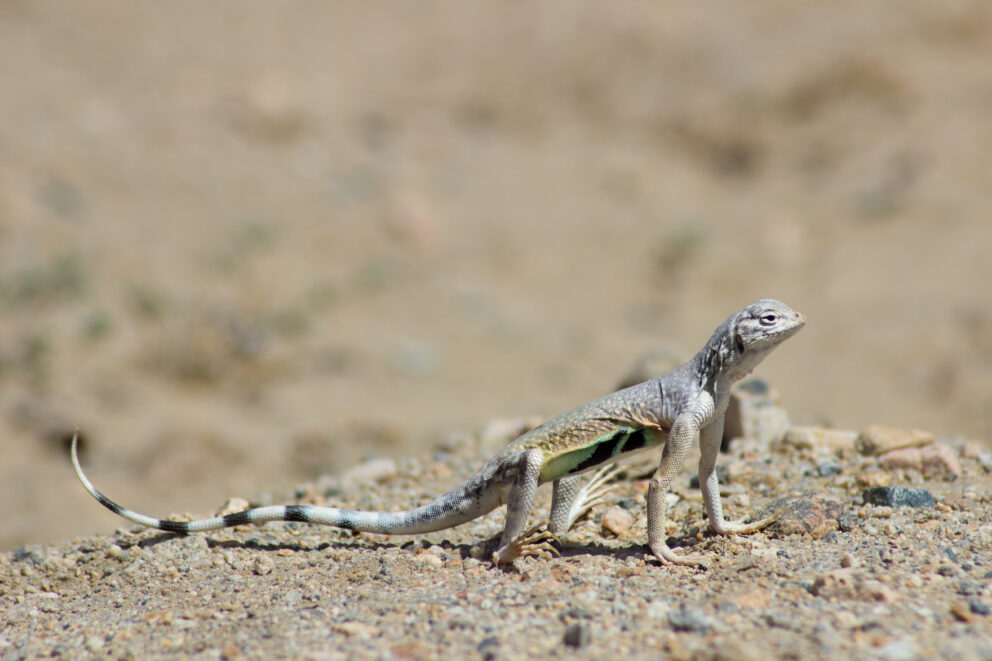- SCIENTIFIC NAME
- Lithobates onca
- CLASSIFICATION
- Amphibian
- LIFE SPAN
- 1-5 Years
- STATE CONSERVATION STATUS
-
- Priority Species
- State Protected
- FEDERAL CONSERVATION STATUS
- Not Evaluated
- GAME STATUS
- Non-Game
- GAME TYPE
- None
- Washoe
- Humboldt
- Pershing
- Churchill
- Mineral
- Lyon
- Douglas
- Carson City
- Storey
- Elko
- Lander
- Eureka
- White Pine
- Esmeralda
- Nye
- Lincoln
- Clark
Habitat & Range
Relict Leopard Frogs occupy springs, spring outflows, associated marshes, and wetland habitats generally close to river systems. In Nevada, they are only found in the southern part of the state in the spring that feeds the Virgin, Muddy, and Colorado Rivers.
- Marsh
- Springs and springbrooks
- Warm desert riparian
Threats
- Disease
- Drought
- Habitat Loss
- Invasive Species
- Water Pollution
Natural History
The Relict Leopard Frog is a rare find and were thought to be extinct. Because of this, there is not much that is known about many of their habits. They are active year-round and are most often observed in shallow water along channels or pool margins. They have been found to breed in September, November, and late January through March. Adults most likely eat invertebrates while tadpoles are more herbivorous, consuming algae and plant tissue.
Fun Facts
The Relict Leopard Frog was one of the first amphibians in North America that were thought to be extinct in the 1950s, however, a population was found in the 90s.














